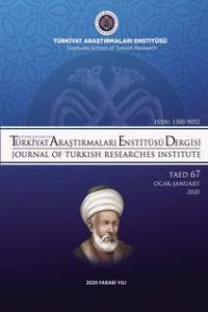SOSYAL MEDYADA “İMAM HATİPLİ” TEMSİLLERİ: KOLEKTİF BİR KİMLİK SÖYLEMİNDEKİ SOSYAL-BİLİŞSEL İZDÜŞÜMLER
Herhangi bir topluma veya guruba ilişkin sosyal temsillerin incelenmesi, onların kimliğini oluşturan toplumsal ve bilişsel unsurları anlamada işlevseldir. Buradan alarak bu makalede, bugün gelinen noktada bir tarihi bellek, buna ilişkin bir bilinç çerçevesinde kolektif kimlik haline gelmeye başlamış “imam hatipli”liğin sosyal, bilişsel unsurlarını çeşitli internet forumlarına, sosyal paylaşım sitelerine yansıyan sosyal temsilleri üzerinden anlamaya çalıştık. Bu anlama faaliyetinde öncelikle “imam hatipli”liği teorik düzeyde bir sosyal temsiller sistemi ve kolektif kimlik olarak ele aldık. Sonra örneklem olarak seçilen metinlere, ilgili söylemlere belirli analiz kategorileri çerçevesinde şekillenmiş sorular yönelttik. Bu sorulardan elde edilen cevaplarda belirginleşen “imam hatipli”liğe ilişkin sosyal temsillerin değerlendirilmesinden hareketle “imam hatipli” kimliğine dair söylemlerin sosyo-bilişsel bir analizini, bir mümkün imam hatipli kimliği tipleştirmesi yapmayı denedik.
Anahtar Kelimeler:
İmam hatiplilik, kolektif kimlik, sosyal temsiller, sosyal medya, toplum
The examination of social representations related to any particular society or group is functional for understanding the social and cognitive elements that form their identity. From this point of view, in this article today within the frame of historic memory and conscience related to this, we have tried to understand the social and cognitive elements of being an “İmam Hatip” member that happened to become collective identity via their social representations that reflect on internet forums and social networking sites. In this understanding activity, primarily we have handled the term of being an “İmam Hatip” member as a system of social representations and collective identity in theoretical level. Then, we have asked formed questions for the texts chosen as a sample and related discourses within the frame of particular analysis categories. With reference to the evaluation of social representations related to being an “İmam Hatip” member that became evident with the answers of those questions, we have tried to make a socio-cognitive analysis of discourses related to the identity of being an “Imam Hatip” member and a possible typification of being an “İmam Hatip” member identity
Keywords:
Being a member of İmam Hatip, collective identity, social representations, social media, and society,
___
Assman, J. (1995). “Collective Memory and Cultural Identity”, New German Critique, 65, 125- 133Bauman, Z. (2009). Sosyolojik Düşünmek. A. Yılmaz (Çev.), İstanbul: Ayrıntı Yayınları.
Brubaker, R. ve Frederick, Cr. (2000). “Beyond Identity”. Theory and Society, 29,1-47.
Cerulo, K. E. (1997). “Identity Construction: New Issues, New Directions”. Annual Reviews Sociology, 23, 385-409.
Cirhingiroğlu, F. G., Aktaş, V. ve Bengi Ö. Özkan. (2006). “ Sosyal Temsil Kuramına Genel Bir Bakış”, CÜSBD, 30(2), 163-174.
Çakı, R., Bozan, İ. ve Balkan Talu (2004). İmam Hatip Liseleri: Efsaneler ve Gerçekler. İstanbul: TESEV Yayınları
Çiftçi, A. (2003). Nasıl Bir Sosyal Bilim. Ankara: Kitabiyat Yayınları.
Durkheim, E. (2005). Dini Hayatın İlkel Biçimleri. (çev. F. Aydın). İstanbul: Ataç Yayınları.
Duveen, G. ve Lloyd, B. (1990). Social Representations and the Development of Knowledge. Cambridge: Cambridge University Press.
http://nedir.antoloji.com/imam-hatip-liseleri/sayfa-1/., 30.09.2013.
http://www.ihlsozluk.com/#660%26sayfa%3D8%26rval%3D99457., 25.09.2013.
Koller, V. (2012). “How to Analyse Colledtive Identity in Discourse-Textual and Contextual Parameters”. CADAAD, 5(2), 19-38.
Melucci, A. (1995). “The Process of Collective Identity”. In H. Johnston, B. Klandermans (Eds.). Social Movements and Culture (s 41). Minneapolis: University of Minnesota Press.
Meriç, C. (1964). “Hürriyet”, Jurnal, İstanbul: İletişim Yayınları.
Moscovici, S. (1984). “The Phenomenon of Social Representations”, In R. Farr, S. Moscovici (Eds.). Social Representations, Cambridge: Cambridge University Press.
Taylor, V., ve N. E. Whittier (1992), “Collective identity in social movement communities: Lesbian feminist mobilization.” In A. D. Morris and C. M. Mueller (eds.), Frontiers in Social Movement Theory (s. 104-130). New Haven, CT: Yale University Press.
TİMAV. (2012). Türkiye’de İmam Hatip Liseleri ve İmam Hatpliler Algısı. İstanbul: TİMAV Yayınları.
Turner, J. C. (1975). "Social Comparison and Social Identity: Some Prospects for Intergroup Behaviour". European Journal of Social Psychology, 5, 5-34.
Volkan, V. D. (2005). Körü Körüne İnanç: Kriz ve Terör Dönemlerinde Geniş Guruplar ve Liderleri. İstanbul: Okyanus Yayınları.
Wagner, W., Gerard Duveen, Robert Farr and etc. (1999). “Theory and Method of Social Representations”. Asian Journal of Social Pyschology, 2, 95-125.
- ISSN: 1300-9052
- Yayın Aralığı: Yılda 3 Sayı
- Yayıncı: Atatürk Üniversitesi Türkiyat Araştırmaları Enstitüsü
Sayıdaki Diğer Makaleler
THOMAS BERNHARD’IN NEDEN VE MAHZEN ADLI ESERLERİNDE MÜZİK MOTİFİ
KIRIM TÜRKLERİNİN 1944 SÜRGÜNÜNÜN 70. YILINDA KÜLTÜR VE SANATTAKİ İZ DÜŞÜMLERİ ÜZERİNE DÜŞÜNCELER
CELIL MEMMEDGULUZADE’NİN MÜSLÜMAN KADINININ HAYATINI ELE ALAN MİZAHİ ŞİİRLERİ
“RİSÂLE-İ MÛZE-DÛZLUK” ÜZERİNE
MEDHİYELERİN SİYÂSET-NÂME TÜRÜ AÇISINDAN DEĞERLENDİRİLMESİ
